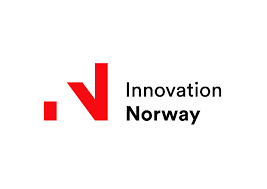
OSLO: Nekkar ASA has received NOK 21 million grant from Innovation Norway to progress with the development of a disruptive installation technology that could significantly reduce the cost and environmental footprint associated with wind turbine installations.
The solution – called SkyWalker – uses active heave compensation derived from offshore lifting systems combined with digital solutions that allow for remote-controlled and automated solutions.
“Our calculations show that SkyWalker can significantly reduce time, cost, and the environmental footprint associated with the installation of wind turbines,” says Preben Liltved, CEO of Oslo-listed Nekkar.
Nekkar is working together with an undisclosed major wind turbine original equipment manufacturer (OEM) and Fred Olsen Renewables, in combination with support from academia, to develop the SkyWalker.
The design and technology of SkyWalker enable a controlled lift that can operate heavier loads and reach larger heights than current crane solutions. In addition, SkyWalker reduces the environmental impact of installing wind turbines by considerably reducing the footprint in nature and CO2 emissions from transportation. SkyWalker is being developed as a zero emissions system.
“SkyWalker is a great example of how we leverage on our strong legacy within oil and gas to create disruptive solutions for sustainable industries. The cooperation with the wind turbine OEM and Fred Olsen Renewables ensures that the development work is fully aligned with the value chain requirements of the wind power industry,” says Mette Harv, head of the Renewables business area in Nekkar.
Over time the levelized cost of energy produced by wind turbines has been reduced to a level where wind turbines today are compatible with any other source of energy. The main driver of this cost reduction is the constant increase in wind turbine size and consequent power output. There seems still to be a lot of potential in building ever bigger wind turbines. Now, however, the traditional crane technologies will not allow for much bigger onshore wind turbines.
“SkyWalker is smaller and requires much less space than other installation solutions such as mobile cranes, meaning that the environmental footprint on terrain is equally reduced. This is, for us, especially important for onshore wind development on hilly sites in Scandinavia. It is also important for us to create local activity in relation with our wind development projects, which is why we initiated the collaboration and have engaged with the Skywalker project,” says Gaute Tjensvoll, business developer at Fred. Olsen Renewables.
Another objective of the SkyWalker is to enable installation of wind turbines at locations where it currently is not practically or financially viable to develop wind farms. The technology also allows installation in stronger winds than today and will decrease the total installation time for the wind farm owners.
Later versions of the SkyWalker technology can be applied to the installation of both bottom-fixed and floating offshore wind turbines, without having to make adaptations to the turbines.
“We firmly believe that SkyWalker has the potential to become a game-changer for the global wind industry. We are thankful that Innovation Norway and our collaboration partners share this view,” adds Mette Harv.
The foundation of Nekkar’s business is world-class engineering, electrification, automation, and digitalisation competence and heritage from the drilling industry in Kristiansand which is the DNA in the company’s digital solutions business area. Nekkar aims to apply this competence as levers to develop disruptive technologies that can make high-growth industry sectors – such as renewable energy – even more sustainable, productive, and profitable.